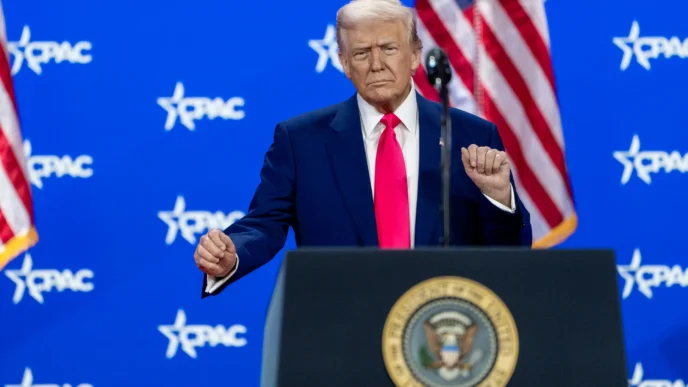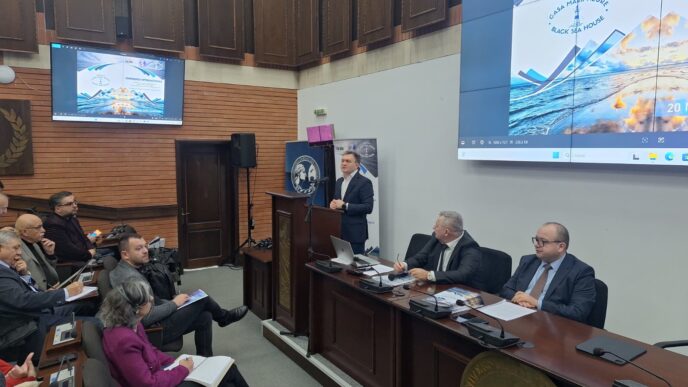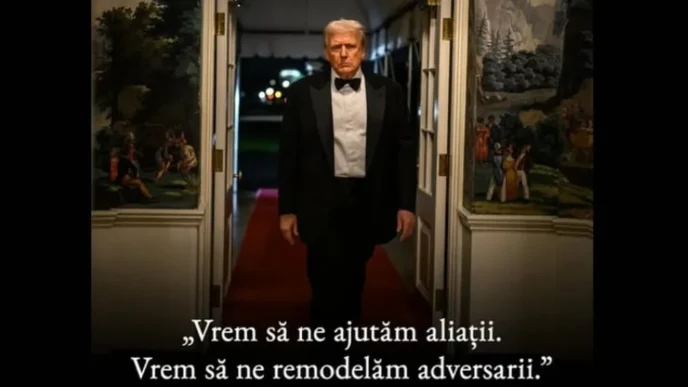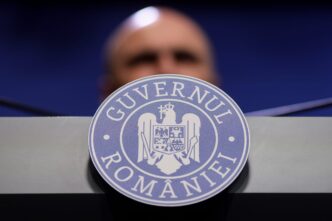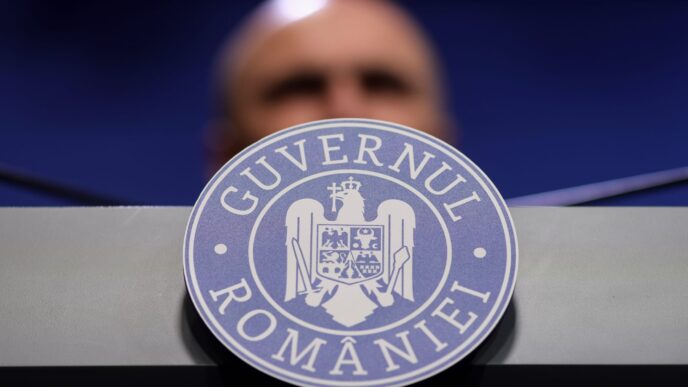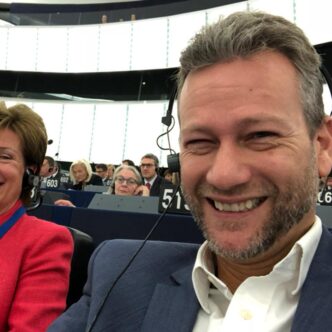Their faces light up and they get noisy when I tell them that one of my great-grandmothers was Gagauz. Suddenly we have something in common, and “rumânski, rumânski” isn’t so bad anymore.
They’re twelve years old, they giggle, they mimic everything we try to say to them in English, they even mimic our gestures, they have fun and buzz around.
They are the children of the Gagauz, a people whose identity the Russians have stripped away, leaving nothing for the future.
A centuries-old history erased by the Soviets
We are in the schoolyard in Copceac, the second largest village in Gagauzia, cut off from the rest of the region. It’s lunchtime and we’re looking for their history museum, the Gagauz museum.
The children are on break and come toward us like cats—curious, but from a distance. I speak to them in Romanian and they look at me as if it’s the first time they’ve ever heard the language; they answer in Russian, I say “Niet” (No), then I try English.
One kid tells me he’s 20 instead of 12, another says we’re at “school one” and need to go to “school two,” where the museum is. The girls laugh and hide behind them when I try to speak to them.
They learn Russian, Gagauz, and, theoretically, English. Romanian is out of the question.

This is a kind of no man’s land – it’s not Russia, but, they say, not Moldova either, and certainly not Romania, to which the territory belonged between 1918 and 1940.
And there’s no trace of Turkey either, even though that’s where their roots lie—roots they are proud of, and the reason their families want the region to be autonomous, because “they are something different” from Moldovans, Russians, or Romanians.
The Gagauz are descendants of the Seljuk Turks who sought refuge in Bulgarian Dobrogea starting in 1236, due to conflicts among the Turkic tribes of the time.
Once settled in Bulgaria, they converted to the Christian Orthodox faith and lived peacefully amongst the local population. They became what we now call the Gagauz.
Over half a millennium later, at the beginning of the 19th century, the Tsarist Empire occupied Bessarabia (1812) and drove out the Muslim Nogai Tatars from the south of the region, which it recolonized with Christian Orthodox settlers: Gagauz and Bulgarians, “imported” over the span of three decades.
Today, all that still recalls the history and identity of the Gagauz are the wells at every gate, decorated with mosaics or painted in bright colors, and the money sent from Ankara for investments in education.

Of all the Gagauz villages and towns we passed through – from Vulcănești, Carbalia, Copceac, Ceadîr-Lunga to Congaz and Comrat – Carbalia is the only place where a little bit of Turkey’s atmosphere is still preserved.

Carbalia is the smallest Gagauz village, cut off even from Gagauzia itself, deserted and eerily silent, just like the valleys and fields hidden beyond the border between Bulgaria and Turkey. In the last 30 years, almost all the locals here have moved to the cemetery.
This cemetery is the liveliest place in the village, holding something hauntingly sad and frozen in time from the history of the Gagauz: They were here, but today no one knows who they are anymore.

Wooden crosses without names or dates lie stuck in the dry earth, swallowed by weeds or fallen over. In the new part of the cemetery are gravestones or funerary monuments of cement or black sandstone, from which stern faces and unblinking gazes eerily stare out at you.

After 1944, Stalin wiped out every trace of Turkishness from the Gagauz and their villages, forcibly Russified the communities, brutally cut them off from the Romanians to whom the Gagauz had been loyal until then, and replaced the Gagauz language, writing, and culture with Russian ones. He sterilized their identity.
But what the Soviets could not replace were the Turkic or Tatar features on the faces of the children in the schoolyard, or on the stony faces of the elders in the ground.
Even so, in the villages of Gagauzia it is taboo to ask why nothing in their places reminds them of their people anymore. Why does their history begin with Lenin? Why do they speak Russian better than Gagauz? Why are their museums lined with giant portraits of Lenin, USSR flags, and Soviet symbols?

I asked all these questions at the museum set up in a run-down school, watched over by the sickle, hammer, and Soviet star, where the children of Copceac had been brought on a field trip by their English teacher on the very day we were there.
The teacher pretended not to understand what we were asking, while the museum director, Gheorghi – who spoke a little broken Romanian he had learned from coworkers back when he worked in Italy – suddenly remembered he had forgotten something in another room and walked away from us.

I asked the children too if they spoke Romanian. You could see the fear in their eyes. As if “rumânski” was something bad, something you don’t talk about, because something might happen.
One bolder boy tugged at my sleeve: “I speak,” and shows me with his fingers, as if measuring, “a little.” I ask what he knows; he struggles to recall: “Bună ziua,” “Mulțumesc,” “Ce faci?” He can’t tell me how many hours they study it per week, then falls silent, saying nothing more about it.
Another kid comes up from behind and distracts me. He points at a wall of photographs. Stern-faced women are lined up – some with headscarves, some without, hair tied back, faces furrowed: “Hero, hero! Ten, eleven children.” They are the heroine mothers of the USSR, who gave birth to more than ten children. “You?” the boy asks me.
I moved on.

Gagauzia of everyone and of nobody
Nowadays, Gagauzia means three poor regions with just over 100,000 inhabitants (Vulcănești, Ceadîr-Lunga, and Comrat), strongly rural, covered in vineyards, and dependent on aid and funding either from Chișinău, the EU, Turkey, and, more recently, Romania.
But the Gagauz demanded the right to self-determination – that is, they want to govern themselves. They voted in a referendum overwhelmingly against the EU in the year Russia annexed Crimea, and they systematically elect MPs with anti-Romania, anti-Western rhetoric.
In the interwar period, historians recorded the opposite reality of today: the Gagauz were considered, on the contrary, the minority that integrated best into the new Romanian state, learned the language most easily, quickly gained literacy, and actively participated in the country’s cultural and social life.
How was such a reversal possible?
It happened after the fall of the USSR, in the early 1990s, under the shadow of fear sown by the Soviets – that Romania would occupy Moldova, annex it, and strip it of its independence. Thirty-five years later, doesn’t it all sound familiar?
At that time, the Gagauz demanded that if this were to happen, their region should remain autonomous and self-governing. Moldova’s Parliament, then dominated by agrarians who later became satellites of the communists, accepted this starting in 1995.
Today, Gagauzia is politically puppeteered from Moscow through Russian proxies in Moldova, and this is most visible, of all its regions, in Comrat, the capital of Gagauzia -torn between the desire for a Western way of life and the Stockholm syndrome of Russian influence. At the same time, the Moldovan media reported last year that there is growing demand from parents to enroll their children in Romanian-language schools -the quick passport to the EU.
Teslas, Lincolns, and luxury SUVs bustled around the center of the capital on Friday afternoon, passing in front of the church from which a deafening clang of bells poured out – rhythmic, like a hypnotic incantation calling the Gagauz to service. At the entrance, colorful headscarves waited on a rack to be worn by women who entered bareheaded.
The Russian church has been heavily involved in elections in Moldova, just as religious elements and symbols were exploited to the point of psychosis by pro-Russian extremists in last year’s election campaigns in Romania.
In 2014, over 90% of the Gagauz voted for membership in the Russia–Belarus–Kazakhstan Customs Union and vehemently opposed joining the EU. They likewise opposed Romania, toward which they harbor fierce aversion, claiming it “wants to occupy their country.”
Today, the most important roads in Gagauzia are being rehabilitated with European money, as are schools and hospitals. The EU has invested more than 50 million euros in Gagauz localities over the past decade. Locals, however, say the EU only wants to get closer to the Russian border.

Elections Nowhere
Politicians don’t crowd to campaign in Gagauzia. In only three of the six localities we walked through – including the capital, Comrat – we saw electoral banners, and even there just one or two from the “patriot” communists and one each from Alternativa or the Moldovans’ Alliance.

In Vulcănești, the southernmost region of Moldova – a town flanked by Galați and the Odesa and Cahul districts, which legend says was named after Volcan, one of three Armenian landowning brothers who settled here in the Middle Ages – there are practically no elections happening on Sunday. Nothing recalls the vote except for two posters from the Ministry of Internal Affairs warning: “Don’t play with your vote or you’ll lose everything.”

Nor in the town of Ceadîr-Lunga or in Congaz, the largest village in Gagauzia, was there any hint of elections on Friday afternoon. Only a Dodon stretched across a house, beside Vlah and Voronin, recalled that in Gagauzia parliamentary elections have been won, since the ’90s, by the communists, their breakaway factions, or independents puppeteered by Russia.
All these localities, however, have one thing in common. One figure. Starting in the 1940s, the Russians shattered the collective memory of the Gagauz and “Sovietized” them, implanting Lenin, founder of the Soviet Union, deep into the core of Gagauz history, at the very heart of their identity.

Today, in every urban center or larger village in Gagauzia, there stands a statue of Lenin – grinning or calling for revolution from a height of several meters – and somewhere nearby, a statue of the Russian soldier fallen in the Soviet invasion of Afghanistan in the 1980s.
The main street in Comrat, the Gagauz capital, is called Lenin. The main street in Vulcănești, the Gagauz town and region closest to Romania, is called Lenin. The main street in the isolated Gagauz enclave of Copceac is called Lenin. The main street in the Gagauz region of Ceadîr-Lunga is called Lenin. The main street in Congaz, the largest Gagauz village, is called Lenin. The main street in Carbalia, the smallest Gagauz village, is called Lenin.
Lenin, the Gagauz.
- Correspondence from the Republic of Moldova, also published in G4Media and Context.ro. Contribution by Cristian Andrei Leonte.
PHOTO GALLERY FROM GAGAUZIA















Ne bucurăm că ne citești!
Dacă vrei să ne și susții:




